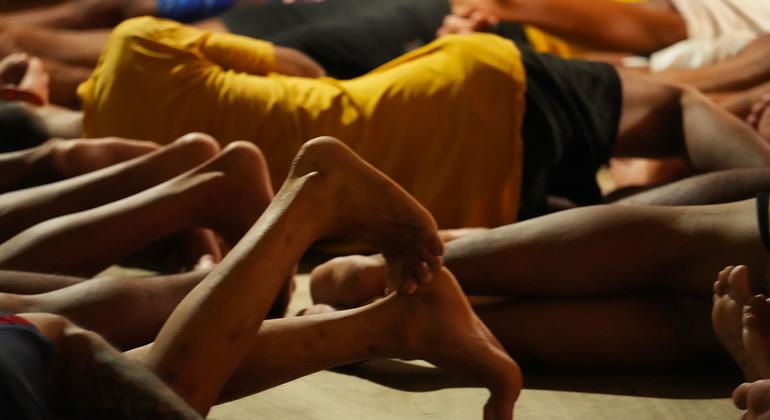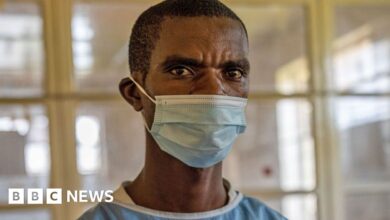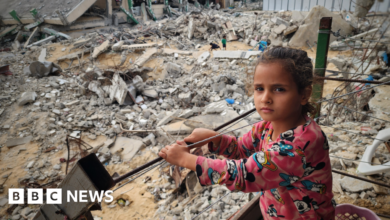Philippines: Humane approach to incarceration helps reduce chronic prison overcrowding

At the Manila City Jail in the Philippine capital, inmates lie in neat rows as they describe how they sleep each night.
In the boys’ dormitory number 4, most of them do not have mattresses or even beds; in fact, it is impossible to have beds because of the lack of space to lie on your back.
Instead, inmates wearing the prison’s mandatory yellow T-shirts often curl up on their sides, often using neighbors as pillows as they try to get some sleep in the cramped, damp conditions.
Carlo* was detained and awaited trial for six years. He said United Nations News during a visit to the prison that “men sleep in rows of maybe 200 all the way to the end of the dormitory, and it is difficult to move,” adding that while “it is uncomfortable, over the years I have gotten used to sleeping on my side. People on the outside may find this sad, but comfort is a relative term.”

The Manila City Jail was built in 1847 during the Spanish colonial period.
A recent unprecedented heatwave in Manila has pushed temperatures in the communal dormitory to more than 40 degrees Celsius (104 degrees Fahrenheit) at night, making living conditions for prisoners even more inhumane, with Carlo suffering from “constant insomnia”.

Warden Lino Montano Soriano points toward the Manila City Jail complex.
The Manila City Jail was originally built in 1847 during the Spanish colonial period in the crowded Santa Cruz neighborhood and is one of the oldest prisons in the Philippines.
Today, the prison’s official capacity is just under 1,200 inmates although there are currently around 3,200 people held there, an overcrowding rate equivalent to 168 percent of capacity.
Warden Lino Montano Soriano has been tasked with reducing the number of inmates in his area of responsibility. Since taking over as prison chief, he has instructed his deputy warden to “check all the files of the inmates, because I believe many of them have scheduled release dates.”
Progress in reducing overcrowding has been slow but on track. In March 2024, 288 inmates were admitted to prison while 354 were released.

Prisoner records are kept at the administrative office of the Manila City Jail.
Administrative procedures are not the main reason for overcrowding in Philippine prisons. A controversial judicial policy targeting drug dealers and users has contributed significantly to the increase in the prison population across the Philippines from about 95,000 to more than 165,000 between 2015 and 2021.
The Philippines currently has one of the most crowded prison systems in the world, and with an overall occupancy rate in pretrial prisons reported at 322% (down from 365% in 2023), the country ranks close to the Democratic Republic of Congo, Haiti, and Uganda in terms of overcrowding.
Many detainees are held for long periods before trial or are released without trial.
The Philippine government has realized that change is needed.

Justice Maria Filomena Singh in her office at the Supreme Court of the Philippines.
Justice Maria Filomena Singh serves on the Philippine Supreme Court and is committed to improving conditions at correctional facilities, including reducing overcrowding.
She also regularly visits women’s prisons: ““They are mothers, daughters, wives and I sympathize with them,” she told UN News, adding that “we cannot call ourselves a just and humane society if we still have people living like this among us.”
The Philippine government is taking a number of steps to reduce incarceration rates.
Release of prisoners aged 70 and over is being prioritised and others can have their sentences reduced through good behaviour, as well as an innovative programme called Read Your Way, which links a commitment to reading activities with earlier release.
Importantly, efforts are being made to avoid ending up in prison in the first place, by reducing the number of people held in pre-trial detention and only detaining those convicted of the most serious crimes.

Women at the Iligan City Jail in Mindanao wear yellow T-shirts that read PDL, People Deprived of Liberty.
“Of all those detained in our jails, about 70 percent have not yet completed their trials. So they are there for preventive detention even if their offences are not serious,” said Justice Singh.
“These people have not been proven guilty yet, but we still treat them no differently than those who have been convicted.”
Reducing bail payments while awaiting trial is another priority. Additional changes are being made to criminal procedures to keep people out of jail when they are “genuinely unproductive,” a situation where families who depend on detainees are “deprived of support,” according to Judge Singh.
Prisoners can also attend court online in certain prisons, which also helps speed up the delivery of justice.
The war on drugs
About 70 percent of those incarcerated in the Philippines are held on minor drug charges, a legacy of the previous administration’s harshly punitive war on drugs.
While the United Nations Office on Drugs and Crime (UNODC) has supported moves to reduce bail, prioritise the release of older prisoners and the Read to Escape programme, while prioritising support for the Government to change its overall approach to drug-related offences.
“Drugs are not just a law enforcement issue, but also a health issue that needs to be viewed through the lens of prevention and rehabilitation,” said Daniele Marchesi, UNODCis country director in the Philippines.
“This is a complex issue, involving the judiciary, police and other law enforcement agencies on issues including health, drug policy and human rights,” Mr Marchesi added.
This complexity requires what Supreme Court Justice Filomena Singh called “a comprehensive approach.”
The new approach appears to have paid off, with about 8,000 prisoners released last year, according to Judge Singh.
Hope to be released
Carlo at the Manila City Jail is one such person, who hopes to soon be among the growing number of released inmates, saying, “I like life outside; I miss the dates and the movies.”




